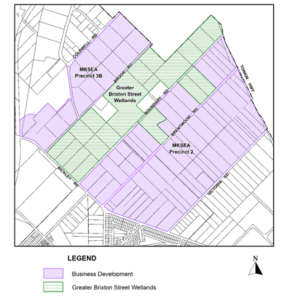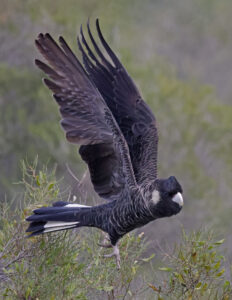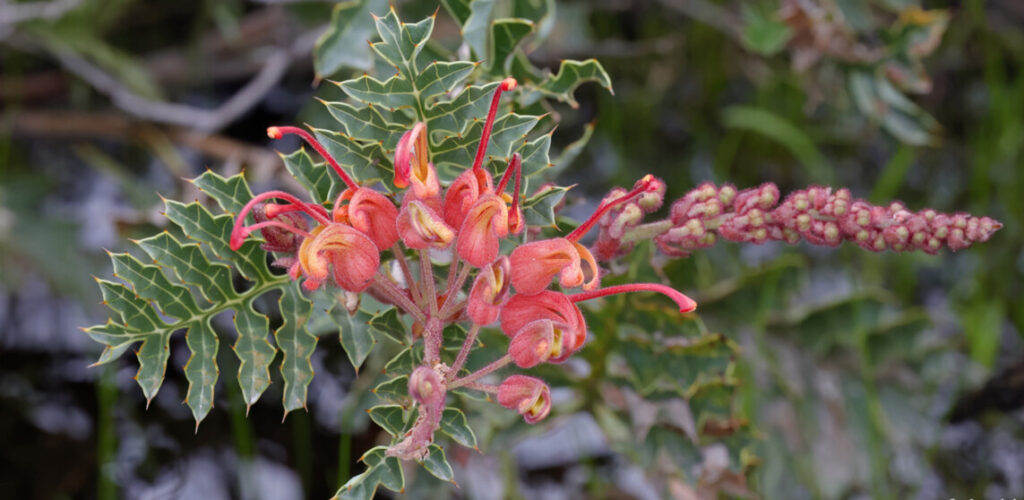
Academics and conservationists have criticised the City of Gosnell’s recent decision to support the reclassification of the Greater Brixton Wetlands (GBSW), with some labelling the council’s position as a “greenwashing”.
At last week’s council meeting, the city voted unanimously to support elevating the GBSW’s status to a Regional Park, offering what they believe will be stronger protection than its current designation as a Bush Forever site.
The expected decision, however, has sparked significant controversy among environmentalists, with the council not fully adopting the Environmental Protection Authority’s (EPA) recommendation for the area.
Conservationists say the council is ignoring EPA recommendations and proceeding with proposed zoning changes that could severely harm the Greater Brixton Wetlands’ delicate ecosystem.

Save the Greater Brixton Wetlands Campaign manager Paddy Cullen said, despite plans to upgrade the area to Regional Park status, the council’s current zoning proposals to the GBSW are disregarding crucial recommendations.
“They have ignored this advice and drawn boundaries that would damage the flora and fauna in this globally significant area,” Mr Cullen said.
“There is no point setting up a regional park and giving it a death sentence.”
City of Gosnells Mayor Terresa Lynes is standing by the council’s own plan and disagrees with the EPA’s recommendations.
“The city believes that the Environmental Protection Authority (EPA) report overlooks the existing significant degradation of land surrounding the wetlands,” Mayor Lynes said.
“Currently, 95 per cent of this land identified for rezoning is either considered degraded or completely degraded and holds very little to no environmental value. The city’s proposal will result in 57 hectares of land rehabilitated to high-quality bushland.”
Mayor Lynes said the State Government has already zoned the land surrounding the wetlands for industrial use, and the council is working to align its local planning scheme with this State’s required framework.

“The city has undertaken a complex body of scientific studies over more than ten years, including site-specific research, data interpretation and seasonal monitoring of the characteristics of the land to be rezoned and its potential interaction with the wetlands habitat,” Mayor Lynes said.
“Rezoning the land will help protect the wetlands by creating formal buffers to separate the wetlands from nearby land uses, providing a drainage management strategy to mitigate any impacts, and improving the City’s ability to guide and monitor future land uses.”
Retired Professor of Plant Biology at The University of Western Australia, Professor Hans Lambers, who has studied the region for decades, strongly disagrees with Mayor Lynes’s opinion on the state of this land and the numbers provided.
“Whilst some of the surrounding area may not be in the prime conditions as the Greater Brixton Street Wetlands, these areas do harbour rare and endangered species, and those areas are crucially important to guarantee the water supply to the pristine area of the Greater Brixton Street Wetlands,” Lambers said.
“[The City Of Gosnells] should go back to the drawing board and develop plans that embrace the concept of the Regional Park, rather than use the words and practice greenwashing.”
Professor Lambers is adamant more needs to be done to protect the wetlands.
“It is of global significance, as it underpins Perth’s reputation as one of the most biodiverse cities in the world. The Regional Park would comprise just two per cent of the total area of Perth yet comprise about half of all the plant species there, many of which are rare or endangered,” he said.
Last Friday, several City of Gosnells councillors took part in a guided tour of the wetlands to gain a deeper understanding of its biodiversity and Ecological significance.
Councillor Kylie Dalton was on the tour and has reiterated her commitment to safeguarding the wetlands.
“Protecting this unique ecosystem is crucial, and the City’s recommendation to elevate it to a Regional Park is a significant step towards its preservation,” Ms Dalton said.
A 2022 report on the Greater Brixton Street Wetlands conducted by the EPA outlined the urgent need for greater protection and coordinated management in the GBSW area.

“Continued piecemeal development without enhancing the protection of the GBSW may result in further degradation of the area’s unique and significant environmental values,” the report said.
“Although multiple policy and planning processes have recognised the values of the GBSW, land tenure arrangements remain complex, and the associated levels of protection and management are inconsistent.”
The report also detailed the lack of a sufficient buffer around the zone for water catchment, poses a significant threat to the wetlands’ environmental integrity.
When contacted, the EPA declined on recent developments, saying it would be inappropriate to discuss the report on the City of Gosnells’ Town Planning Scheme amendments to the area, as it is currently under appeal.

After its recent endorsement at the council meeting, the city will now advise the Minister for the Environment, Reece Whitby, of its support for the creation of a Regional Park around the Greater Brixton Street Wetlands.
Despite the decision, Paddy Cullen said the fight for greater protection of the GBSW is not over.
“This is the pride of Gosnells; it is our Ningaloo Reef on land with more than twice as many plant species as Ningaloo has coral,” Mr Cullen said.
“It is the most biodiverse area on the entire Swan Coastal Plain. It contains half of Boorloo (Perth’s) plant species in just one per cent of the area. There is nowhere quite like it anywhere in Australia and possibly the world.”













